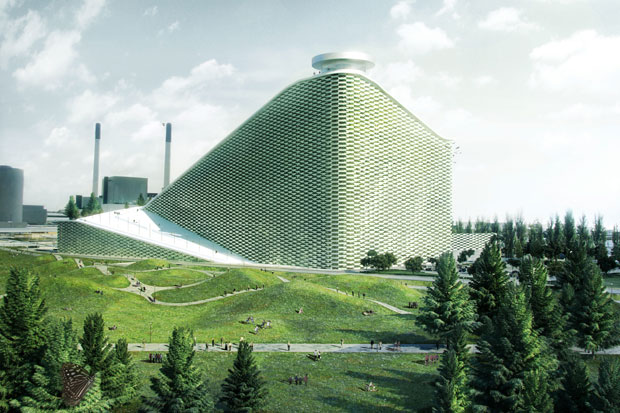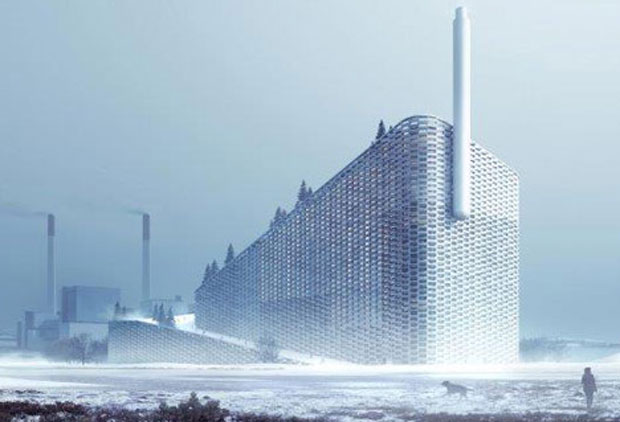
BIG magics a ski slope from a working power plant
Architect Bjarke Ingels calls new plant an example of BIG's desire for 'Hedonistic Sustainability'
For clients who want a big idea, there’s no better place to turn than BIG Architects. The firm, with its charismatic leader Bjarke Ingels is more than happy to tear up a humdrum brief and deliver the unexpected.
That’s how a power plant is to double as a ski slope. The $670m Amager Bakke plant boasts an incinerator that turns 400,000 tons of rubbish into heating and electricity for surrounding households. The original brief was for a nice façade for the building in an industrial area near Copenhagen’s centre, but Ingels was underwhelmed. “We couldn’t escape the feeling that we were just making it look nice,” he says. “It lacked a clear benefit to the community.”
The designers’ solution was to create a ski slope from the 100m-high peak of the building all the way down to the ground. Come 2017, visitors will hop into a lift that travels up a smokestack and offers views into the plant itself. Skiers will be able to make gentle zigzags down between the pines, and then a sharp right turn onto a ramp to make their way along the side of the building. In total, that’s 11,000sq m of ski runs, sprinkled with a mixture of bonafide and artificial snow. And while skiers slalom down, hikers will be able to make the ascent.

“The new plant is an example of what we at BIG call Hedonistic Sustainability – the idea that sustainability is not a burden, but that a sustainable city in fact can improve our quality of life,” said Ingels when BIG won the building project. “The Waste-to-Energy plant with a ski slope is the best example of a city and a building which is both ecologically, economically and socially sustainable.”
Bjarke Ingels' idea reminds us a little of some of the ideas in Jonathon Porritt's new book The World We Made. It too imagines a sustainable future that looks like a whole lot of fun rather than hard work. You can read Phaidon Editor Ellen Christie's introduction to The World We Made here, take a look through a gallery of images from the book or just buy the book from the people who made it here.